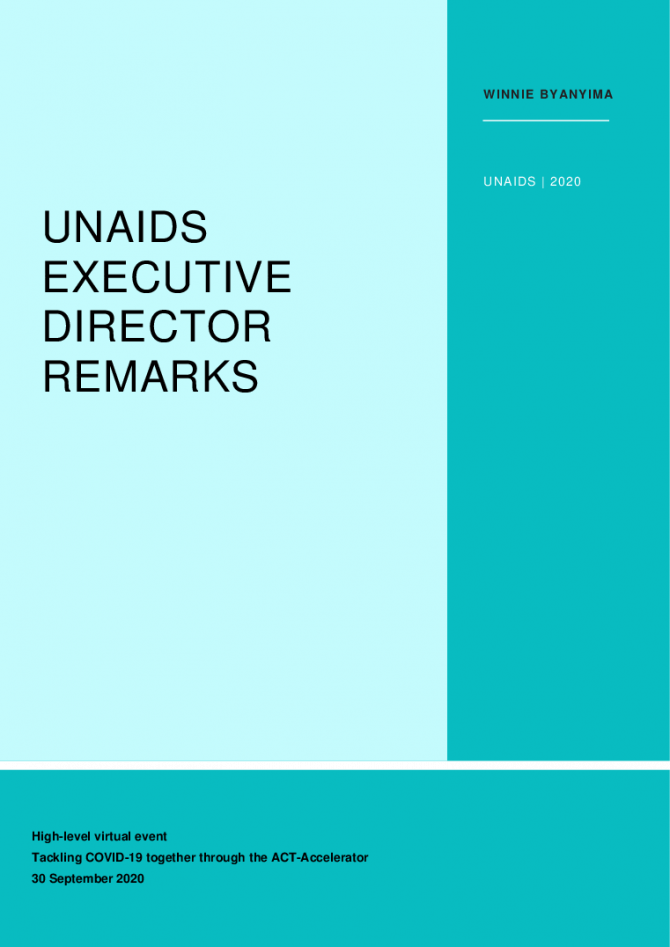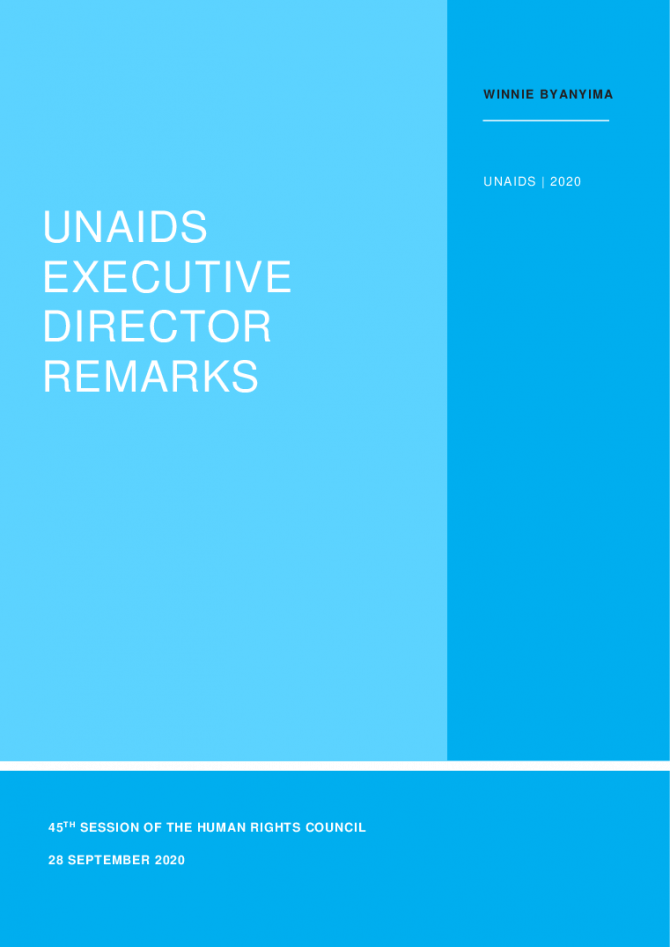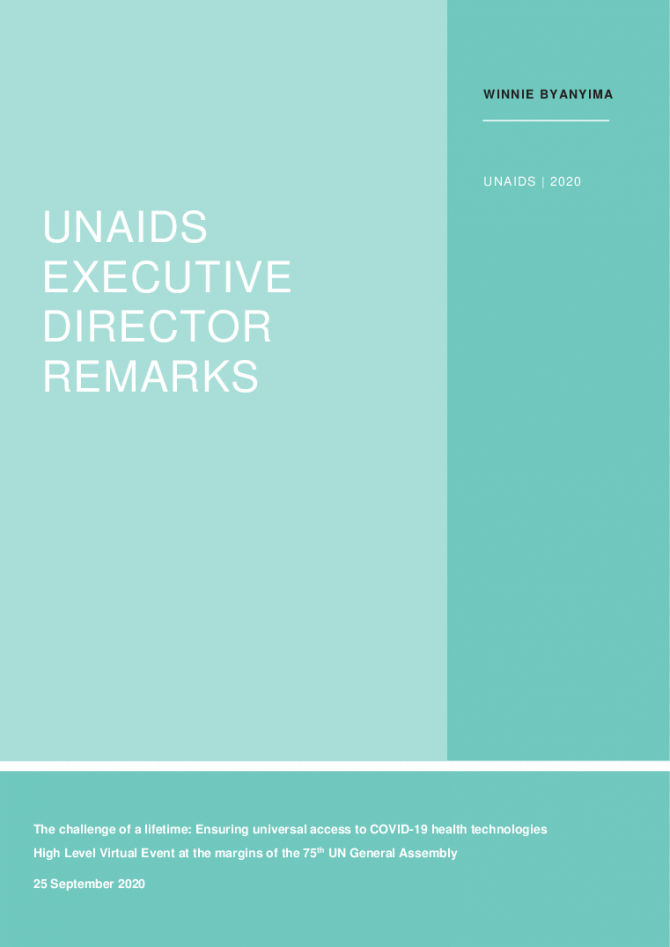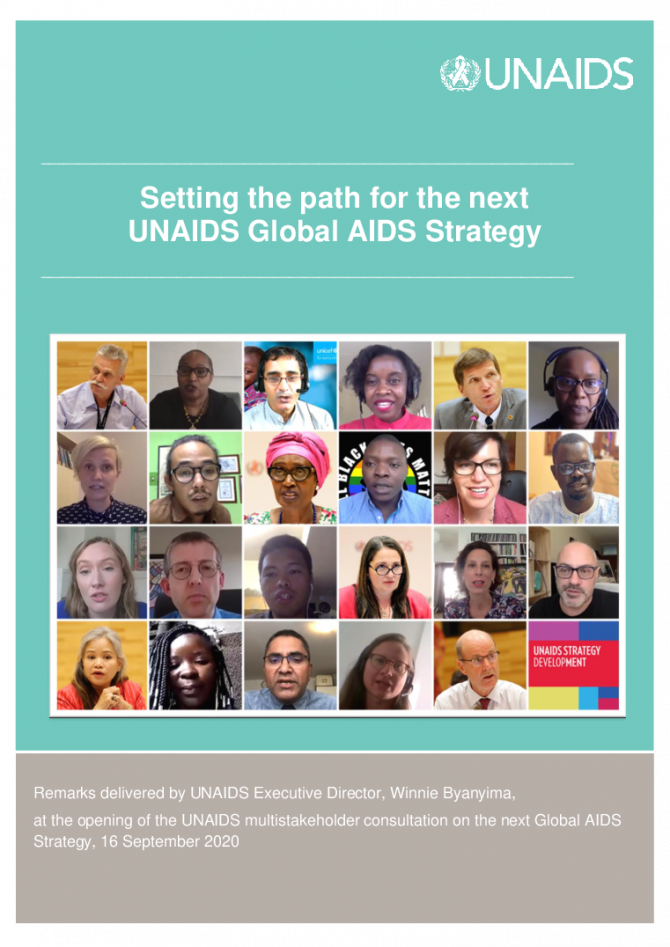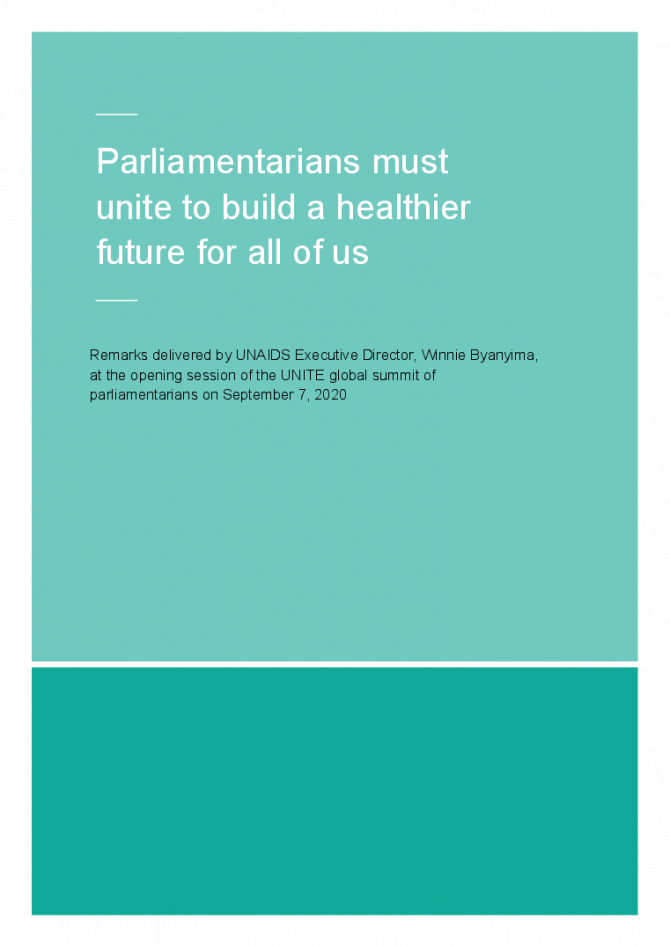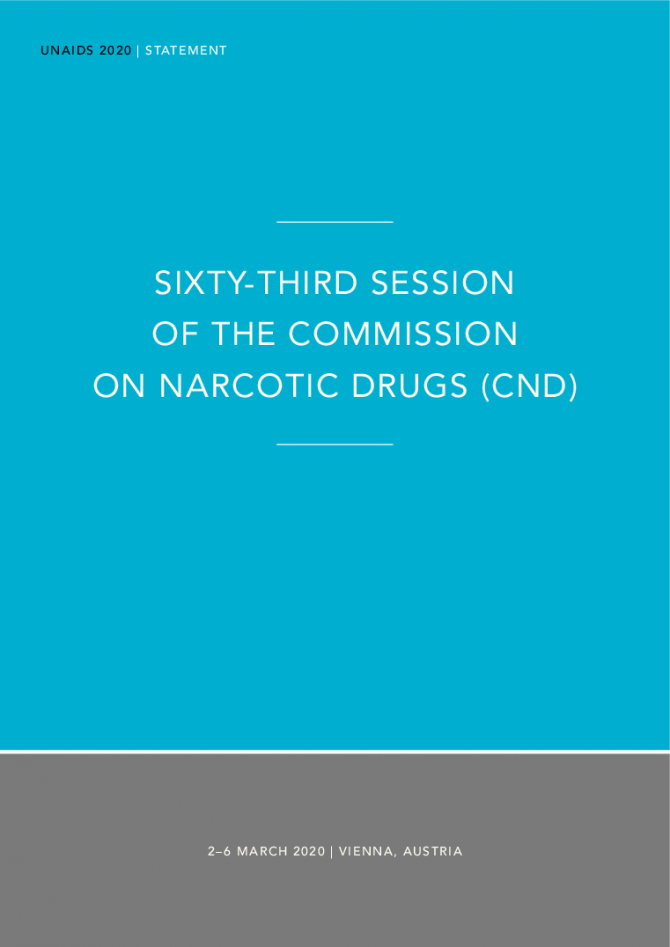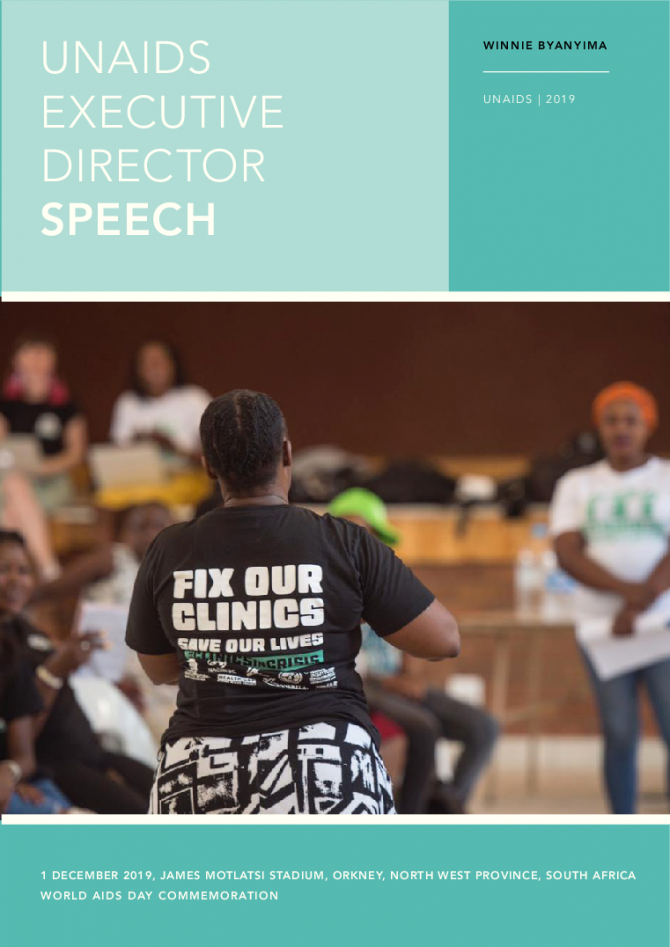Documents
Report of the UNAIDS Executive Director — Opening of the 46th meeting of the UNAIDS Programme Coordinating Board
23 June 2020
2020 is a critical year for our Joint Programme as we collectively define the path to getting back on track to ending the AIDS epidemic by 2030. Our revised timelines for adoption of the next strategy are highly ambitious. We need the full support of all the tremendously dedicated people in UNAIDS-within our staff, our board and all our stakeholders to make this happen.
Documents
Sixty-third session of the Commission on Narcotic Drugs (CND) — 2–6 March 2020 | Vienna, Austria
04 March 2020
At a time when we should be entering the last mile in the decade of action for the SDGs, UNAIDS highlights with urgent concern that the HIV epidemic among people who use drugs is still increasing. Worldwide, 14% of the 12 million people who inject drugs are living with HIV. The risk of acquiring HIV for people who inject drugs is 22 times higher than for those who do not. In many countries, the quality, coverage and funding for HIV programmes among people who inject drugs is deteriorating. This is not just a worrying trend. This is a public health emergency.
Documents
World AIDS Day report launch, Nairobi, Kenya, 26 November 2019
26 November 2019
I am here because Africa is the continent still most affected by the HIV epidemic. More than 25 million people are living with HIV in sub-Saharan Africa—more than two-thirds of the global total of 37.9 million people living with HIV. I am also here because many countries in Africa are leading the way to end AIDS. We are heroes, fighting the epidemic. In Kenya, AIDS-related deaths have fallen by more than 50% since 2010, and new HIV infections are down by 30%. This is a great achievement. Great progress in a short time. Today, I can announce that 24.5 million people living with HIV around the world now have access to life-saving treatment. Great news and great progress.

